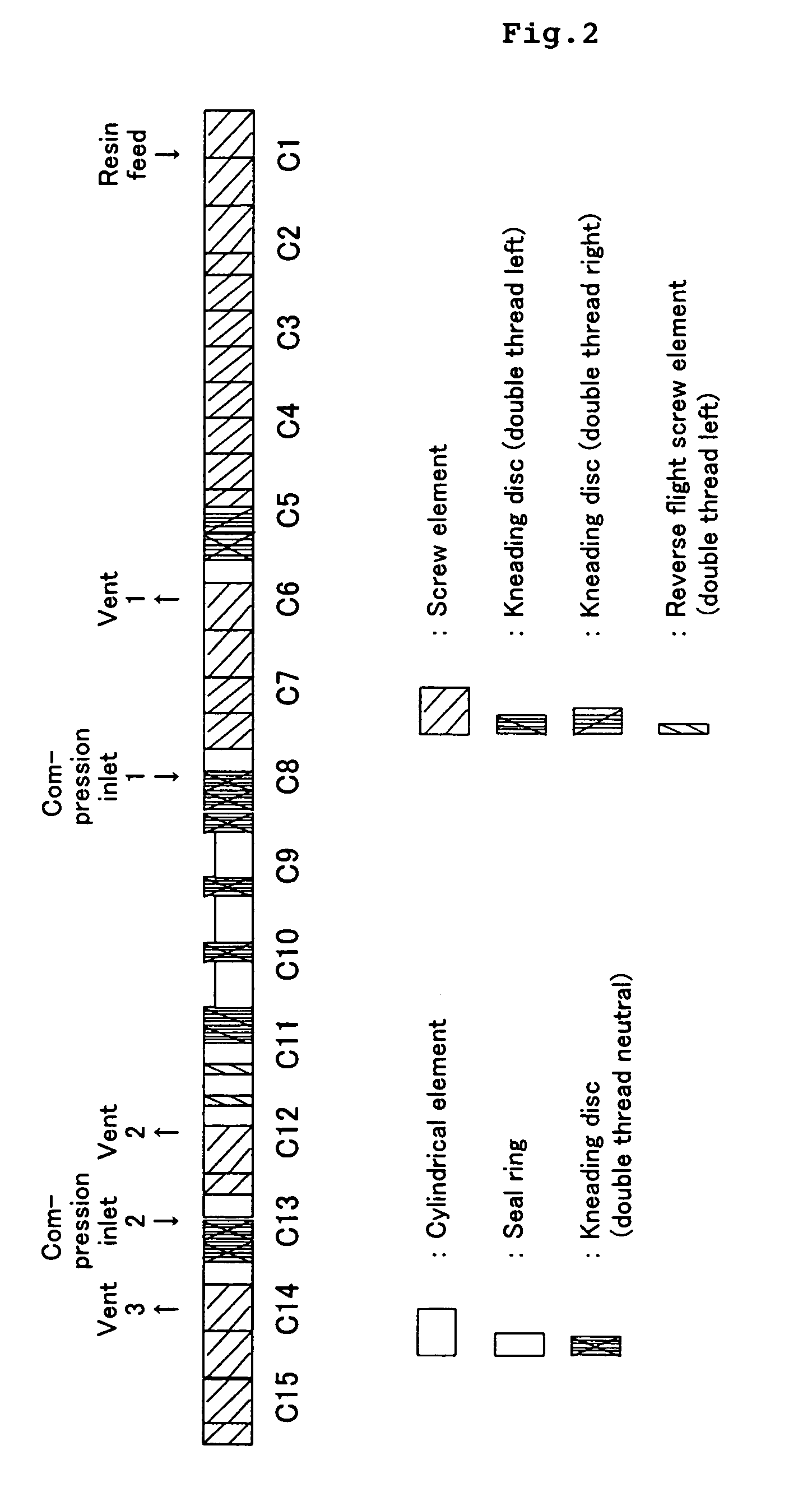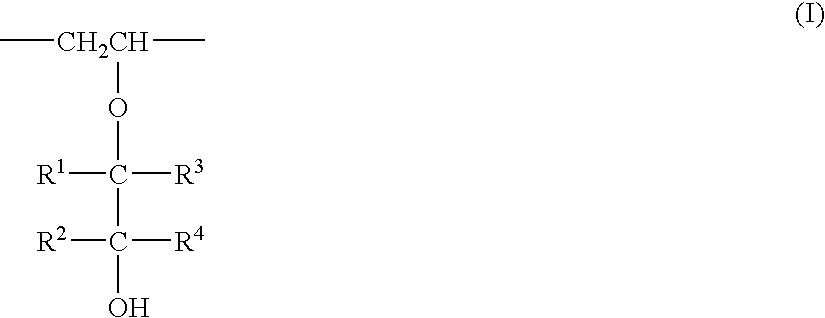Resin composition and method for producing the same
a technology of composition and resin, applied in the field of resin composition, can solve the problems of affecting the surrounding environment and the working environment, affecting the quality of the product, and emitting an acetic acid smell, and achieve the effects of less odor, superior melt stability, and long-run workability
- Summary
- Abstract
- Description
- Claims
- Application Information
AI Technical Summary
Benefits of technology
Problems solved by technology
Method used
Image
Examples
example 1
[Preparation of EVOH Resin Composition (F)]
[0241]Into a saponification reactor having a capacity of 470 L, 50 kg of a 45% methanol solution of an ethylene-vinyl acetate copolymer having an ethylene content of 32 mol % and 129 kg of methanol were charged and the internal temperature was adjusted to 60° C. while nitrogen gas is blown into the reactor. 29 L of a sodium hydroxide solution (concentration: 80 g / L) in methanol was added thereto and saponification reaction was started. During the saponification reaction, nitrogen gas was blown continuously into the reactor in order to exhaust methyl acetate formed in the reaction system as a by-product out of the reaction system together with the methanol in the reaction system for the purpose of improving the reaction efficiency. The exhaustion rate was about 20 kg / hr in total of methyl acetate and methanol. The exhaust was condensed in a cooling condenser to be recovered. After a lapse of two hours since the start of the reaction, 29 L of...
example 2
[Preparation of EVOH Resin Composition (F)]
[0254]Into a saponification reactor having a capacity of 470 L, 50 kg of a 45% methanol solution of an ethylene-vinyl acetate copolymer having an ethylene content of 27 mol % and 129 kg of methanol were charged and the internal temperature was adjusted to 60° C. while nitrogen gas is blown into the reactor. 29 L of a sodium hydroxide solution (concentration: 80 g / L) in methanol was added thereto and saponification reaction was started. During the saponification reaction, nitrogen gas was blown continuously into the reactor in order to exhaust methyl acetate formed in the reaction system as a by-product out of the reaction system together with the methanol in the reaction system for the purpose of improving the reaction efficiency. The exhaustion rate was about 20 kg / hr in total of methyl acetate and methanol. The exhaust was condensed in a cooling condenser to be recovered. After a lapse of two hours since the start of the reaction, 29 L of...
example 3
[Production of Modified EVOH (G3)]
[0270]A modified EVOH (G3) was produced according to a method described below. The analysis of the starting EVOH and the resulting EVOH (G3) was conducted according to the methods disclosed in a pamphlet of International Publication No. WO 02 / 092643.
[0271]28 parts by weight of zinc acetylacetonate monohydrate was mixed with 957 parts by weight of 1,2-dimethoxyethane to yield a mixed solution. To the resulting mixed solution, 15 parts by weight of trifluoromethane sulfonic acid was added under stirring to yield a catalyst solution. In other words, prepared was a solution resulting from mixing 1 mol of trifluoromethane sulfonic acid per 1 mol of zinc acetylacetonato monohydrate.
[0272]Pellets of an EVOH which had an ethylene content of 44 mol %, a degree of saponification of 99.8%, an intrinsic viscosity of 0.096 L / g, an MFR of 5 g / 10 min (at 190° C. under a load of 2160 g), an acetic acid content of 53 ppm, a sodium content of 1 ppm (in terms of metal...
PUM
| Property | Measurement | Unit |
|---|---|---|
| melting temperature | aaaaa | aaaaa |
| residence time | aaaaa | aaaaa |
| residence time | aaaaa | aaaaa |
Abstract
Description
Claims
Application Information
 Login to View More
Login to View More - R&D
- Intellectual Property
- Life Sciences
- Materials
- Tech Scout
- Unparalleled Data Quality
- Higher Quality Content
- 60% Fewer Hallucinations
Browse by: Latest US Patents, China's latest patents, Technical Efficacy Thesaurus, Application Domain, Technology Topic, Popular Technical Reports.
© 2025 PatSnap. All rights reserved.Legal|Privacy policy|Modern Slavery Act Transparency Statement|Sitemap|About US| Contact US: help@patsnap.com



